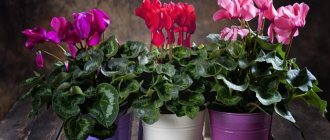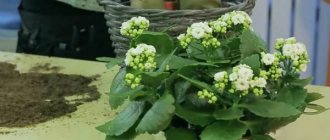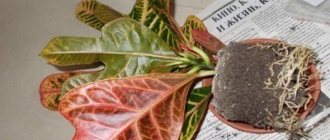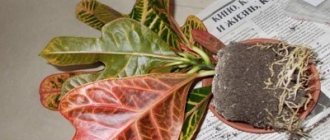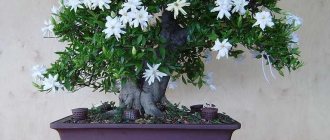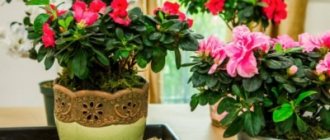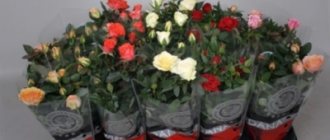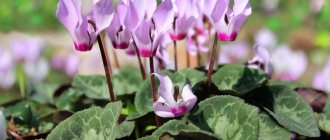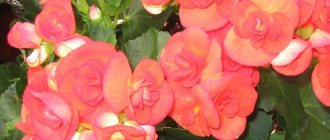Not many plants delight us with bright colors in cold weather. Increasingly, along with the green color of the needles, the bright leaves of the Christmas star are flashing in our homes. The plant has several other names: euphorbia, poinsettia (poinsettia), Christmas star, queen of euphorbias, star of Bethlehem, most beautiful euphorbia. In winter, this plant produces amazing leaf stars at the tops of its branches. The photo shows a flower with red leaves. Caring for the plant is simple, and many successfully preserve it after purchase, replanting and propagating it at home.
Legend and history
Many legends and tales dedicated to this amazing plant have been preserved. If you believe this legend, then the Christmas star owes its name to children from a poor family. Traditionally, the Mexican poor carried offerings to the newborn on Christmas Eve. But the children had nothing to give. Then they collected field herbs, which magically turned into fabulously beautiful flowers at the cradle.
But the poinsettia flower was named after Joel Poinsett. The American ambassador to Mexico was an enthusiastic person; he was interested in the flora of the tropics. In 1825, he was the first to bring these brightly colored branches to one of the American states.
The cuttings took root successfully, and Joel gave the plant the name euphorbia, after the ancient philosopher and healer. But among the people, the name poinsettia, which comes from the surname of the ambassador, stubbornly stuck.
In the tropical forests of its homeland, this shrub of the Euphorbiaceae family reaches three meters in height.
What does the name mean and what does the culture look like: description and photo
Red poinsettia or beautiful spurge due to the unusual color of the bracts are also called Christmas rose, beautiful euphorbia and Christmas star in everyday life.
The history of the emergence of red poinsettia as a houseplant is associated with the name of the US Ambassador to Mexico, Joel Robert Poinsett, and the flower is named in his honor. Admired by the colorfulness and extraordinary beauty of the plant, Poinsett sent seedlings to America for cultivation and further propagation.
Red poinsettia is an evergreen plant of the Euphorbiaceae family , a representative of the flora of Central America and Mexico. In nature, the bush can reach 3 m in height; indoor plants grow up to 50 cm.
Appearance:
- stems are straight, do not branch;
- the leaves are dark green in color, quite large: up to 15 cm long, the leaf shape is pointed-elliptical with characteristic serrations;
- dense leaves form a spherical crown;
- small yellow flowers are located in bracts, the type of inflorescence is a basket;
- the bracts are shaped like leaves, but have a rich red color;
- The red color of the bracts is due to nature, other types of poinsettia are a product of selection.
In its natural habitat, beautiful spurge can only be found with red colored bracts.
Below you can see a photo of the culture:
Purchase rules
Advice! The joy of buying a living Christmas gift will not be overshadowed if you know some of the subtleties of choosing a poinsettia. When purchasing, carefully examine the flowers themselves. Make sure they are not yet covered in fluffy pollen and are brown or dark green in color.
And if the pollen is already ripe, then the Christmas star will not retain its bright color for long, and you will not be able to admire the perfection and sophistication of its shape. The plant will soon lose the elasticity of the leaves, they will curl and fall off. This is a natural process of wilting, but it largely depends on the conditions of the plant.
A healthy flower should be harmonious in shape. From any angle, the Star of Bethlehem should look attractive.
Overgrown, hooked branches indicate unprofessional shaping of the bush.
Poinsettia flower - description
Christmas poinsettia is an evergreen shrub that reaches up to 3 m in height in nature. It has dark green petiolate, ovate-elliptical leaves 10-15 cm long with serrated edges. Poinsettia flowers are yellowish, small, collected in rosette-shaped inflorescences and are of no interest from a decorative point of view, but the bracts formed around the flowers are very impressive: they are large and can be colored bright red, pink, cream, yellow, blue. , in addition, varieties have been bred with bicolor bracts, decorated with streaks, streaks and veins. Indoor poinsettia blooms in December-January.
Caring for poinsettias after purchase
It's no secret that flowers, after being purchased in a store, need to be replanted. They are planted in special soil for ease of transportation. It is enriched with microelements, but its structure is not intended for the long life of the plant.
In garden centers, flowers are fed regularly, saturating them with the substances necessary for life. They look cheerful and healthy in appearance. At home, it is difficult to provide a flower with the same care as in a store.
Over time, nutrients are washed out of the artificial soil, and the plant can become sick and die. Be prepared for the inevitable replanting of your poinsettia. During the holidays before the New Year, you can do more important things while the plant gets used to the new living conditions.
The adaptation period takes several weeks. But if it is not possible to provide a flowering plant with a new home, then it is permissible to leave it in the same pot, moderately feeding it with complex fertilizers so that the plant does not disappear.
Comfortable lighting for plants
The poinsettia flower prefers well-lit places, however, the aggressive sun during the flowering period often destroys the leaves of the plant. The flower will do best in the southeast or south of the room.
And in the summer, it is better to take the pot with the plant out onto the balcony, but first make sure that it is not damaged by heat, wind and drafts.
When to replant a Christmas star
After the New Year holidays, poinsettia enters a dormant period: the leaves wither and fall off, the branches are exposed. This is a natural process, and it cannot be avoided even with proper care at home. The Christmas tree usually finishes flowering in early spring. The bush is cut at a height of 10 cm from the edge of the pot.
Advice! If you have not yet transplanted euphorbia, then this must be done in March. Prepare light, crumbly soil that does not retain moisture for replanting. Be sure to add small pebbles or expanded clay to the bottom of the pot for drainage.
At home, to transplant a flower into a new container, you can use a ready-made soil mixture containing humus, leaf, peat soil and sand. Usually the composition of the primer is written on the package.
Note! In the first month, it is enough to water a newly planted Christmas tree with clean water at room temperature, there is no need to apply fertilizer, and no additional care is required at this time. The plant must take root in the new environment and grow stronger.
It is important that the new container into which you transplant the poinsettia is slightly larger than the previous one. It is enough that its volume is approximately one and a half to two times larger than the root itself with a lump of earth. Don't forget that the more soil the pot holds, the longer it takes to dry out.
Poinsettia roots do not tolerate waterlogging well, and the flower will feel uncomfortable in a spacious home. After transplanting, move the euphorbia to a cool place, reducing watering to a minimum. Until May, the milkweed will gain strength to grow in order to bring joy and encouragement next year.
Problems during cultivation
Why doesn't poinsettia bloom?
The first reason is that you did not prune the flower after flowering. Old shoots will not bloom.
Also, the flowering of the Christmas star may not occur if the temperature and light conditions are not observed. Read the article and reconsider flower care.
Why do poinsettia leaves fall off?
There may be several reasons for this:
- The Christmas star is preparing for a period of rest;
- insufficient watering;
- waterlogging of the soil at low air temperatures;
- insufficient lighting;
- drafts or sudden temperature changes.
Why do poinsettia leaves turn yellow?
Main reasons:
- dry indoor air;
- waterlogging of the soil and, as a result, rotting of the roots and yellowing of the foliage;
- pests that feed on plant sap, causing the leaves to turn yellow and dry out.
Caring for the plant after transplantation
In order for a flower to delight you more than once with its bright outfit, it needs a special approach.
The tropical plant is very light-loving, but it does not tolerate direct sunlight. Try to find the flower a bright, quiet place without cross ventilation. Crowding of plants also does not have the best effect on poinsettias.
She may even shed leaves if she is cramped. She also cannot stand the dominance of other plants. If you take your grown flower out into the garden for the summer, do not leave it in the open air in heavy rain. Euphorbias tolerate temporary dryness more easily than excess moisture.
Water the euphorbia bush depending on the conditions of its maintenance. If you doubt the need for watering, then examine the surface of the earth; if it is dry at a depth of 2 cm, then water the plant.
Start fertilizing when shoots appear. Poinsettias are quite suitable for fertilizers for flowering plants with microelements. At home, after transplantation, plants should be fed no more than twice a month.
Types of poinsettia for home breeding
Many plant species have been bred for interior decoration, but the most popular is red poinsettia. It is positioned as a New Year's one; it is familiar to us from the Christmas decorations of European stores.
| Varieties | Name | Bract color |
| Red varieties | Cortez Fire | Bright red. The first has a fiery tint, the second has a sparkle. |
| Red Diamond | ||
| Sonora | ||
| Galaxy | Purple. Jester Red has darker veining. | |
| Godlfinger | ||
| Jester Red | ||
| Olympia | Scarlet, the first one is fiery. | |
| Peterstar | ||
| Sonora Fire | ||
| White | Freedom White | Delicate. |
| Regina | With herbaceous inclusions. | |
| Silverstar White | Mini-shrub, snowy, for flower pots. | |
| Whitestar | Bright. | |
| Pink | Carousel Pink | Delicate, with terry leaves with herbal inclusions. |
| Cortez Pink | With an orange tint. | |
| Da Vinci | White coated. | |
| Freedom Pink | Delicate color. | |
| Jester Pink | With grassy edge. | |
| Marblestar | Delicate color with white edging. | |
| Coins | With a white pattern. | |
| Silverstar Marble | Soft pink with thin white edging. | |
| Pink Ale | Bright. | |
| Sonora White | Ivory with herbaceous inclusions. | |
| Variegated | Jingle Bells Sonora | Burgundy-purple with white inclusions. |
| Sonora White Glitter | Variegated white. | |
| Strawberryend Cream | Creamy purple with white piping and terry edge. |
In the southern regions, the shrub is planted in open ground in combination with Codium variegated iakalifa. This mix looks very impressive.
Hybrid poinsettia species
Correct bush formation
If you do not prune after flowering, then the Christmas star will actively grow and will never bloom again. The next stage of formation begins when the poinsettia emerges from hibernation. As soon as sprouts appear on the bush, you should leave 4-5 branches in different directions and cut off the rest. At home, a sharp knife is used for this purpose, since cuts from scissors do not heal for a long time, and the bark on the trunk may peel off.
After formation, the bush quickly grows a new crown.
The photo will help you make sure that the correct formation of euphorbia gives it the appearance of an elegant holiday bouquet.
To rejuvenate the plant, when the bush becomes very elongated and the branches become bald, pruning is carried out. In this case, the shoots are cut short, leaving 5-6 buds on them. The branches grow quickly. When pruning the plant, do not forget that the juice of euphorbias is very poisonous and can cause irritation and allergies if it comes into contact with the skin. Cut parts of branches can be used for rooting. A Christmas gift, conceived long before the holiday, will pleasantly surprise your loved ones.
Benefits and harms
The flower has a rich chemical composition:
- the plant's bristles contain essential oils, tartaric acid, starch, glucose and sucrose;
- alkaloids, tannins, sulfur, formic acid, etc. were found in the leaves;
- milky juice is rich in organic acids, biologically active components and mineral salts.
In Mexican folk medicine, the juice of the plant is used to remove calluses, warts and other skin ailments. Herbalists attribute pain-relieving and wound-healing properties to poinsettia leaves.
Poinsettia red is not included in the State Pharmacopoeia of Russia and is not used in official medicine.
Milky sap can cause an allergic reaction and skin irritation. If ingested, intoxication and vomiting are possible, so all manipulations with the flower must be carried out with rubber gloves.
Preparing the plant for flowering
To make the winter outfit of the Christmas tree appear on time, do the following:
- Shorten the flower's daylight hours. Every evening for 14 hours, hide the flower in a dark closet with the doors tightly closed. Not a single ray of light should penetrate the shelter. Even a weak light from an electric light bulb can prevent leaves from coloring.
- Leave the flower in the light during the day.
- Water and fertilize the plant as usual.
- Follow this regimen for 10 weeks.
- If signs of staining appear on the leaves, the darkening can be stopped.
- Don't apply fertilizer.
- To prolong flowering, the air temperature should be approximately 14°C
- If there are a couple of weeks left before the holidays, and you have not had time to prepare the poinsettia for winter flowering, then you can cause the leaves to turn red in the following way: keep the queen of euphorbias “dark” for almost the entire day. Place it in the light for 2-3 hours.
If these conditions are met, your beauty will bloom for 4 to 6 months. Contrary to popular belief, an annual plant, purchased or gifted on the occasion of a holiday, is renewed annually and will become a decoration and talisman of your home.
How to make poinsettia bloom in the second year
To stimulate the formation of buds, from the beginning of October every evening the flower is removed to a dark place. It could be a bedside table, a closet, or just a box. In the dark without the penetration of even the slightest light, the Christmas star must remain 14 hours a day.
Many gardeners simply put a large cap on it. But this cap must be made of very thick paper or cardboard.
As soon as you see that the bracts have begun to open, you don’t have to remove the poinsettia in the dark.
Poinsettia propagation at home
At home, in tropical forests, poinsettia reproduces by seeds. Once on the ground, they produce numerous shoots. But with artificial breeding, this option is not the most successful. All varieties of the most beautiful milkweed, which breeders are proud of, are the result of their many years of work.
The seeds of these plants do not retain varietal characteristics. The resulting samples are not so bright and colorful, in addition, their juice is quite poisonous. Trying to propagate a tropical plant by seeds not only makes no sense, but is also quite unacceptable because of the danger.
The only remaining method is vegetative propagation. At home, it is quite easy to propagate this wonderful plant by cuttings. The upper part with five to six buds is cut off from the elongated shoot. The cutting should be soaked in water at room temperature, then dried and powdered with activated carbon. Plant several treated branches in a pot. After rooting, you will get a lush, beautiful bush that does not require careful care.
Important! Part of the plant planted for rooting should not be buried more than a centimeter into the ground.
In the video you can learn about caring for, pruning, and replanting poinsettias at home after purchase.
Propagation of poinsettia by cuttings
Poinsettia is successfully propagated by apical cuttings, which can be cut both from a flowering plant, before the dormant period begins, and in a new growth cycle, when young branches appear. Shoots suitable for propagation must be at least 10 cm long and have a pair of developed leaves.
Before planting in the ground, the cut cuttings are soaked in water for several minutes to allow the milky juice to drain, then they are treated with a stimulant and buried into the ground no more than 1 cm. If planted deeper, there is a high risk of the shoot rotting. For rapid rooting, which most often occurs within a month, the sprouts are provided with greenhouse conditions with daily ventilation.
Pests and diseases of poinsettia
The Christmas star feels good in conditions close to its native climate. A native of the tropics needs sufficient humidity, moderate watering, light and the absence of drafts for full growth and flowering. If these conditions are violated, the bush may lose its attractiveness, wither and become sick.
The main enemy of milkweed is the whitefly, an insect similar to a white moth that settles on the underside of the leaf. The problem must be dealt with immediately, as insects multiply quickly. While the pest population is small, you need to wash the flower, then generously spray the leaves with an insecticide solution.
Dry air can lead to the proliferation of spider mites and scale insects; they literally entwine the delicate poinsettia. Affected leaves become covered with a yellow coating. Ticks are difficult to notice with the naked eye. Measures to combat this pest are similar - spraying with chemicals.
Poinsettias are often affected by mealybugs. They are easy to spot on the leaves. It is necessary to act immediately, otherwise the plant infected with the parasite will die in a short time.
Advice! In addition to the soap solution, the plant is thoroughly washed with an alcohol solution or treated with available chemicals of the appropriate type.
Fungus gnats can cause damage to the root system. This is a winged midge several millimeters in size; its larvae settle in the root system of the plant, causing significant damage to it. The sooner you start fighting the midge, the fewer plants will be infected with its larvae. Raptor can be used against flying insects, and any drug against soil pests will help against larvae. One of the popular methods is to mulch the surface of the earth with expanded clay. The attentive eye of the gardener will help you see pests in time and take timely measures.
If the Christmas star is provided with good care at home, then this amazing home flower will bring joy and fun to the house. The Star of Bethlehem will help you get rid of causeless worries. Guests come to a house decorated with Christmas bushes more often. It is no coincidence that poinsettia owners note in their reviews that this is the best Christmas gift that brings joy, peace of mind and hope for the revival of all living things.
How do you like the article?
Potential diseases and parasites
Poinsettias can suffer from parasites such as thrips, spider mites or mealybugs. Most often these pests are brought from flower shops. You can eliminate parasites with a warm shower and soapy water.
If you were given a poinsettia as a gift and you have already seen it bloom, then believe me, you will not be able to part with it. Caring for the plant is feasible and is not difficult even for beginners. But every Christmas you will wait with bated breath for the appearance of the bright leaves of the beautiful poinsettia and the holiday will become doubly brighter for you.
When to carry out such a procedure?
Attention! Pruning is carried out after flowering ends: this is the end of winter, the beginning of spring.
The flowering period occurs during the cold season, after which the bush sheds its leaves. At this time, the flower develops future seeds between the red bracts. If poinsettia is trimmed correctly, then next winter the flower will delight the owner with its bright flowers.
Is it possible to do this in October?
If pruning after flowering was missed because the perennial did not shed its leaves, then it is worth postponing pruning until October. This way the flower can gain strength before the next winter flowering.
If the poinsettia does not shed its leaves in October, pay attention to the presence of buds on the branches, it is from them that future leaves will appear. If buds are present, the plant can be pruned.
A plant cut in October needs additional shelter and light.
What happens if you don't prune?
Important! To form a beautiful crown and abundant flowering, the plant needs pruning.
Because from each bud, each stem, a young shoot may appear in the future. This is a big load on the root system of the flower and stems. The poinsettia bush will not be formed, the leaves will stick out in different directions, and there will be no flowering. There will be no cohesive picture of a beautiful indoor plant.
The plant is cut to form a beautiful crown of the plant.
Poinsettia does not require professional care. Even an inexperienced gardener can handle pruning. Poinsettia is a beautiful indoor flower that needs the care of its owner. With the help of simple manipulations, the bush will delight its owner every winter.

